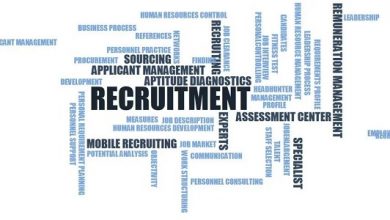Satisfaction surveys its Purpose Types benefits and 7 TIPS
WHAT IS SATISFACTION SURVEY?
The satisfaction survey is a proactive strategy of companies, in which its main function is to receive customer feedback . It is, for the most part, very simple to apply and brings valuable results.
These feedbacks are so rich in information that they can be turned into opportunities once the needs and tastes of consumers are clarified.
Oh, and remember that the survey is done through objective questionnaires and can be applied at different points in the customer journey.
WHAT TYPES OF SATISFACTION SURVEY?
There are two types of satisfaction surveys; the relational and the transactional and as we said, they will be sent at different moments of the customer journey.
But beware, not all metrics will be suitable for carrying out both types of research. Some metrics will work better on just one of them. Take a good look:
1-relational
Relational research assesses your customer‘s satisfaction in general, that is, how satisfied they are with your brand and/or product.
It will show you the gaps that need attention. In this way, it is ideal for generating insights into the “whole”.
A good practice is to fire them on a regular basis. Most companies, for example, conduct relational satisfaction surveys every 3 months, or every six months.
NPS, for example, is a metric that can be used both relationally and transactionally.
2-Transactional
Transactional surveys, as the name implies, are those carried out after some transaction between the customer and the brand.
They serve to measure whether your customer‘s satisfaction has changed after a recent interaction with your brand and provide valuable insights into how the customer’s experience is at every touchpoint they have with your company.
These surveys can be sent, for example, after the end of a service, finalization of a customer purchase, closing of a call, among other options.
HOW IS THE SATISFACTION SURVEY CARRIED OUT?
The satisfaction survey must be designed for your audience . It should have simple, objective questions (the customer needs to understand what is being asked) and can be triggered through different channels (more on this later).
A good practice is to inform your customer how much time he will spend to answer that question. Thus, there is an alignment of expectations and he is not frustrated.
1-Who to send?
You can send your survey to both external and internal customers.
With external customers, consumption habits can be mapped in a simplified way and with less “guessing”. When evaluating attributes of your product or service, the consumer weakens or strengthens your brand image.
Internally, managers can measure the satisfaction of those who consume their services the most, who apply their values and who are in continuous contact with their products: employees.
Evaluating the experience of this audience can better direct the team’s efforts towards achieving excellent results for the entire company.
WHAT ARE THE BEST SATISFACTION SURVEY QUESTIONS?
As we mentioned earlier, satisfaction surveys should be simple, objective and short, as a very large survey can cause customer fatigue and decrease the chances of responses.
But then which questions to use? Let’s see that for each metric there are some more suitable questions. And remember: for every moment of the journey, there is a metric !
1-NPS
NPS ( Net Promoter Score) is one of the main customer satisfaction metrics. It uses a simple question to measure customer experience. That question is “On a scale of 0 to 10, how much would you recommend our company to a friend?”
With the grades in hand, it is possible to find out who the detractors (grades 0 to 6), neutral (grades 7 and 8) and promoters (grades 9 and 10) are.
2-CSAT
The CSAT (Customer Satisfaction Score) is a metric used to measure short-term customer satisfaction.
She uses questions with the objective of measuring punctually the consumer’s satisfaction with her product/service.
See an example of a question that can be asked when using the CSAT: “how would you rate your satisfaction with the service offered?”.
Responses can be expressed on a percentage scale ranging from 0 to 10, with 10 being maximum satisfaction and 0 being total dissatisfaction, or on a scale from 0 to 5.
Do not forget, however, that the CSAT can be used empirically by each company.
3-CES
The CES (Customer Effort Score) is a metric used to identify how much effort your customer had to put in an action with your company. Thus, the more effort, the less satisfaction.
In the case of CES, the customer is invited to respond about their experience with a product or service. Questions might be, for example, “how hard did you put in [USE PRODUCT X]? ”
Responses can range from “less than I expected” (showing there was little effort) to “much more than I expected” (showing that your customer had to put in a lot of effort).
4-Like/Dislike
Like/Dislike is a metric used to collect customer micro-feedback. It represented by the thumbs up and down symbol is quite.
You can use the like/dislike to ask about the customer‘s experience with a specific service, for example: “rate your experience with the restaurant’s service” .
The goal is to quickly assess customer satisfaction at a specific point in the journey.
5-ratings
Another survey that falls into the category of micro-feedbacks is Ratings. They can be understood as a simplified alternative to CSAT, being represented with star icons, for example.
Through the Ratings, the customer can classify how was their experience with a product or service of the company. Therefore, it is common for the “question” of this metric to be: “ rate your experience with the product/service offered by COMPANY X” .
What are the channels to carry out the satisfaction survey?
Satisfaction surveys can be carried out in two ways; physically or virtually.
Surveys carried out physically can be online (through totems and/or small devices where the customer can evaluate service with a click) or offline (through paper forms , for example).
Virtual surveys, on the other hand, can be sent through different channels, such as; anonymous link, SMS, WhatsApp , email , among others.
It is important to remember, however, that the use of online forms and specialized platforms allow for a more complete analysis.
BENEFITS OF THE SATISFACTION SURVEY FOR COMPANIES
Conducting satisfaction surveys and getting to know your audience better brings many advantages to your company. Shall we meet some of them?
1-Greater customer retention
There is nothing worse than a dissatisfied customer, that is, a detractor. This customer‘s word of mouth is fierce and reverberates more than the opinions of a happy consumer.
That’s why it’s so important to listen to your consumer constantly. The sooner you listen to it and find out where your fault is, the cheaper it will be to get your old customer back.
In addition, customers who feel that they are really being heard are more likely to continue to consume from your company, as they know that their problems will be solved and that their opinion is taken seriously.
2-Identify failures
Through satisfaction surveys, you can more clearly understand the positive and negative points of your brand, and thus you can devise more assertive strategies to remedy your flaws.
Is your product working properly? Does it fulfill the promised function? Does your brand provide the support you need? These and other questions can be answered with the satisfaction survey.
3-Innovation
Innovation is pointed out as a relevant agenda for investors and partners; but for it to be promoted, more companies need to be open to receiving feedback on what they offer.
This incentive is an agreement that fuels the development and competition of markets.
4-Research and Development
Data are important inputs for new efforts. In addition, they can reduce scenario uncertainties about products and services that are under test or urgently need improvements and modifications.
5-understand the competition
Do you know how your competition is performing? What is it offering differently to its consumer?
It is not always easy to identify what your competitor has more than you, so satisfaction surveys help a lot to identify bottlenecks.
Think about it: sometimes your company and the competition offer the same product/service with the same quality, but differentiated service can be the key to customer loyalty, and identifying this quickly is the recipe for success.
7 TIPS TO TAKE ADVANTAGE OF THE SATISFACTION SURVEY
We’re almost at the end of our article, but we couldn’t finish without telling you 7 amazing tips for you to optimize your search and analysis of results.
1 – Organize your customer base
You need to track your customer base from the most recent consumer to the oldest contact in order to maintain active management, win and retain customers and increase profitability.
This follow-up is not restricted to having your customer‘s name, phone number and email. Here, we propose a 360º customer base, with information that will give relevance to your competitive differential.
Therefore, relying on memory or luck can pose a risk to your business. See how to better organize your customer base;
- Centralize information: CRM ( Customer Relationship Management ) facilitates information optimization and, above all, customer loyalty
- Define subject tags and characteristics: X-ray who consumes your product or service. The more information the company has about its consumer, the easier it will be to meet their demands. Create a follow-up , analyze interactions, record comments and determine the customer profile. This way it will be easier to have a segmented and even personalized communication.
- Follow the frequency of consumption: by knowing the frequency of purchase of your consumer, the company can outline a strategy to increase the frequency of communication, offering promotions, special discounts, news in products and services and can even anticipate needs.
- Update data and information: periodically update basic contact data and, if possible, add more information about your consumer.
2 – Identify the touch points
Touchpoints can be found throughout the customer‘s purchase path, whether physical (offline) or virtual (online) points.
By identifying these points of contact, it is possible to understand how consumption , service, access, problems, and also how the purchase decision takes place.
3 – Align your approach with the customer profile
The approach assumes that you have defined your target audience and the primary and secondary objectives of the research.
It may not be an easy task, but you should look into it, after all, the question will drive the entire mapping.
Therefore, avoid conceptual questions, opt for questions about quality and satisfaction of indicators, such as service and deadline, for example.
4 – Do a simple search
The client does not have time for conceptual and complex questions, and the research must be objective and avoid mixing several subjects in one question.
The NPS methodology, for example, allows 1 question to be asked per survey, facilitating customer reception with a short and easy-to-answer question.
5- Organize the information according to the variables relevant to you
Have you defined your research objectives? Then, it will be easy to define which variables are relevant and tangible for your business.
6- Solve customer problems (micro) or close the loop !
This step is known for responding to customer complaints or requests. But replying doesn’t mean sending a “thank you!” or “let’s analyze the problem”, you need to actually solve the problems and avoid continuing the bad experience of your customers.
7 – Publicize the results internally as a way of learning
Are we going to be honest with our employees? Publicizing all results, whether positive or negative, increases the engagement of teams in the search for problem solutions and motivates professionals to grow their careers within the company itself.




